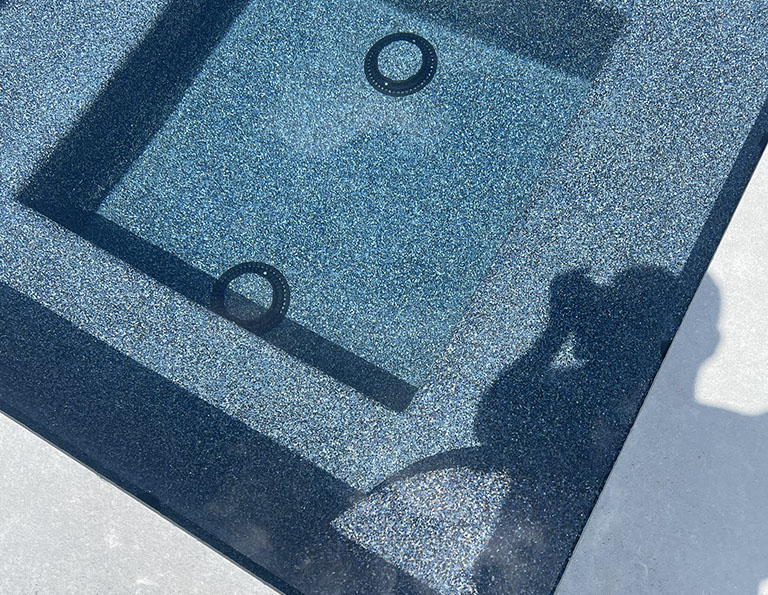
Table of Contents
Introduction
Did you know that traditional swimming pools can consume up to 20,000 gallons of water annually? With the growing focus on sustainability, eco-friendly pool designs are gaining popularity across the United States. Whether you’re looking to save on energy, reduce water waste, or create a harmonious backyard oasis, there’s an eco-friendly pool design to fit your vision.
Let’s dive into the top 5 eco-friendly pool designs for sustainable living that are not only stylish but also kind to the planet.
1. Natural Swimming Pools
Natural swimming pools (NSPs) mimic the beauty of lakes and ponds, blending seamlessly with the surrounding landscape. Instead of relying on chemicals like chlorine, these pools use biological filtration systems with plants and gravel to keep the water clean.
Key Features:
- Filtration System: Includes aquatic plants and microorganisms.
- Aesthetic Appeal: Natural pools often feature rock formations and lush greenery.
- Water Savings: Closed-loop systems minimize water evaporation and wastage.
Benefits:
- Chemical-free, making it safe for sensitive skin.
- Creates a thriving ecosystem that attracts birds and butterflies.
Tip: To enhance the look, consider native Pennsylvania plants like water lilies or cattails to complement the pool’s design.
2. Solar-Heated Pools
Harness the power of the sun to keep your pool warm throughout the swimming season. Solar panels or solar mats can be installed on your roof or near the pool to efficiently capture and transfer heat to the water.
Key Features:
- Energy Source: Solar power eliminates the need for gas or electric heaters.
- Customizable Setup: Systems can be scaled to fit your pool size.
Benefits:
- Reduces energy bills significantly.
- Cuts down on greenhouse gas emissions.
Cost Insights:
Feature | Average Cost | Lifespan |
Solar Panel System | $3,000 – $7,000 | 20+ years |
Installation | $500 – $1,000 | – |
Tip: Check for local incentives in Pennsylvania to offset installation costs.
3. Saltwater Pools
Saltwater pools are a healthier and more sustainable alternative to traditional chlorine pools. They use a salt chlorine generator to produce the necessary sanitizing agents, offering a more natural swimming experience.
Key Features:
- Salt Chlorine Generator: Replaces the need for harsh chemicals.
- Gentler Water: Softer on skin and hair compared to chlorinated pools.
Benefits:
- Lower ongoing maintenance costs.
- Reduced environmental impact from chemical use.
Considerations:
Saltwater systems require periodic maintenance to monitor salt levels and clean the generator. However, the long-term savings and environmental benefits make them worth the investment.
4. Energy-Efficient Pool Equipment
Eco-friendly pools aren’t just about the design—equipment matters too. Upgrading to energy-efficient pumps, filters, and lighting can significantly reduce your pool’s environmental footprint.
Key Features:
- Variable-Speed Pumps: Use less energy than single-speed models.
- LED Lighting: Consumes up to 80% less energy than traditional lighting.
- Cartridge Filters: Require less backwashing, saving water.
Benefits:
- Immediate savings on utility bills.
- Extends the lifespan of pool components.
Energy-Efficiency Comparison:
Equipment | Traditional | Eco-Friendly |
Pool Pump Energy Usage | 2,000 kWh/year | 800 kWh/year |
Annual Cost | $400/year | $160/year |
Tip: Combine energy-efficient equipment with a pool cover to prevent heat loss and evaporation.
5. Rainwater Harvesting Pools
Why let rainwater go to waste when it can refill your pool? Rainwater harvesting systems are an innovative way to make the most of natural resources while keeping your pool topped off.
Key Features:
- Collection System: Gutter and downspout integration.
- Filtration: Ensures clean water enters the pool.
Benefits:
- Saves thousands of gallons of municipal water annually.
- Helps manage stormwater runoff.
Installation Tips:
- Install a pre-filtration system to remove debris.
- Use storage tanks or cisterns to capture excess rainwater.
Tip: Pair this design with a drought-resistant landscape for maximum sustainability.
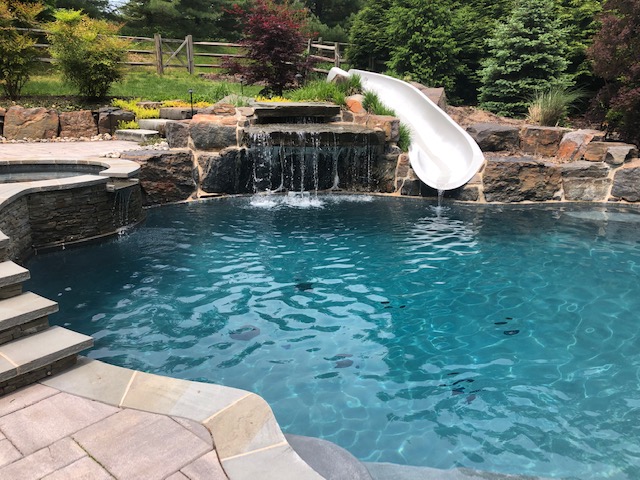
Conclusion
Eco-friendly pool designs are more than a trend; they’re a step towards sustainable living. From natural swimming pools that mimic nature to solar-heated systems that harness renewable energy, these designs offer a balance of beauty, functionality, and environmental stewardship.
If you’re ready to take the plunge into sustainable living, start exploring these designs today. Whether you’re building a new pool or retrofitting an existing one, an eco-friendly approach will benefit both your wallet and the planet.


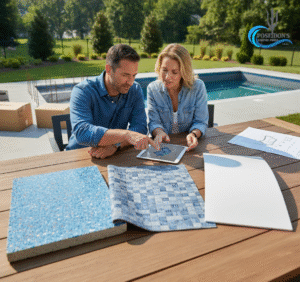
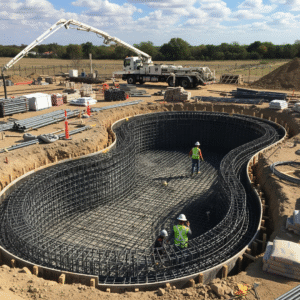
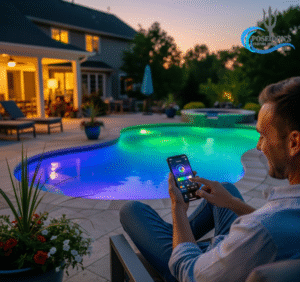
3 Responses